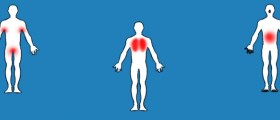
Sore throats are most often caused by viral infections, but group A Streptococcus can also induce a sore throat. This bacterial infection is called strep throat. You may have heard that strep throat mainly affects children, and though it's true that this bacterial infection is more common in kids aged five to 15, anyone can get it — and adults who work with children are more at risk, as the infection is contagious.
Strep throat in adults tends to be mild, but usually causes significant discomfort and pain, swelling, and fever. It should be treated as soon as it is diagnosed, otherwise it may in some cases cause pustules and require a surgical intervention.
Strep throat is spread through direct contact with an infected person or by means of contact with droplets that land on objects after an infected person has coughed or sneezed. The bacteria can also be transmitted through contaminated food, when you use the same plate, cutlery, or glass as someone who has strep throat.
People who smoke and spend time in crowded, poorly cleaned and ventilated places are more prone to strep throat.
Signs and symptoms of strep throat in adults
The main warning signs of strep throat are a sore throat and difficulty swallowing, due to swollen lymph glands in the neck. Strep throat can also cause fatigue, muscle weakness and pain, vomiting, (high) fever, headache, loss of appetite, pain in the lower abdomen, red and sore tongue, white patches inside the throat and enlarged and inflamed tonsils.
People who have strep throat do not typically suffer from a cough or a runny nose; these signs indicate that you are more likely to be dealing with a viral infection than with strep throat.
Diagnosis and treatment of strep throat in adults
If one or more of the signs and symptoms of strep throat are present, you are highly recommended to see a doctor. The sooner the infection is diagnosed, the more effective and complete the recovery will be.
Doctors cannot diagnose strep throat simply based on a physical exam, history, and the symptoms reported by the patient. In order to determine the cause of the infection, a rapid strep test, which provides an instant answer, and throat culture test, which is a gold standard and provides a definitive diagnosis, are the only reliable options.
When doing a throat culture, doctors use a long cotton swab to collect a sample from deep inside the patient’s mouth and send it to the laboratory. If the culture comes back positive to streptococcus, doctors can definitively diagnose a strep throat infection and proceed with treatment. In some cases, the doctor may be convinced strep throat is the most likely cause even if the rapid test comes back negative and treat you as if you had strep throat.
Strep throat is treated with antibiotics. It is very important to follow the doctor’s orders and the antibiotics exactly as he or she prescribed. Because the symptoms may subside very soon after you start taking antibiotics, some people are going to be tempted to stop the course. It is crucial to finish the entire course, however, as the bacteria will still be present. If the antibiotics are discontinued before due time, it may result in building resistance to the specific antibiotic and in recurring strep infections.
Painkillers and throat lozenges can be taken to relieve the pain, and there are also medications that reduce high fever. Doctors recommend rest and taking a lot of fluids, especially warm soup, herbal tea, yogurt and plain water.

















Your thoughts on this
Loading...